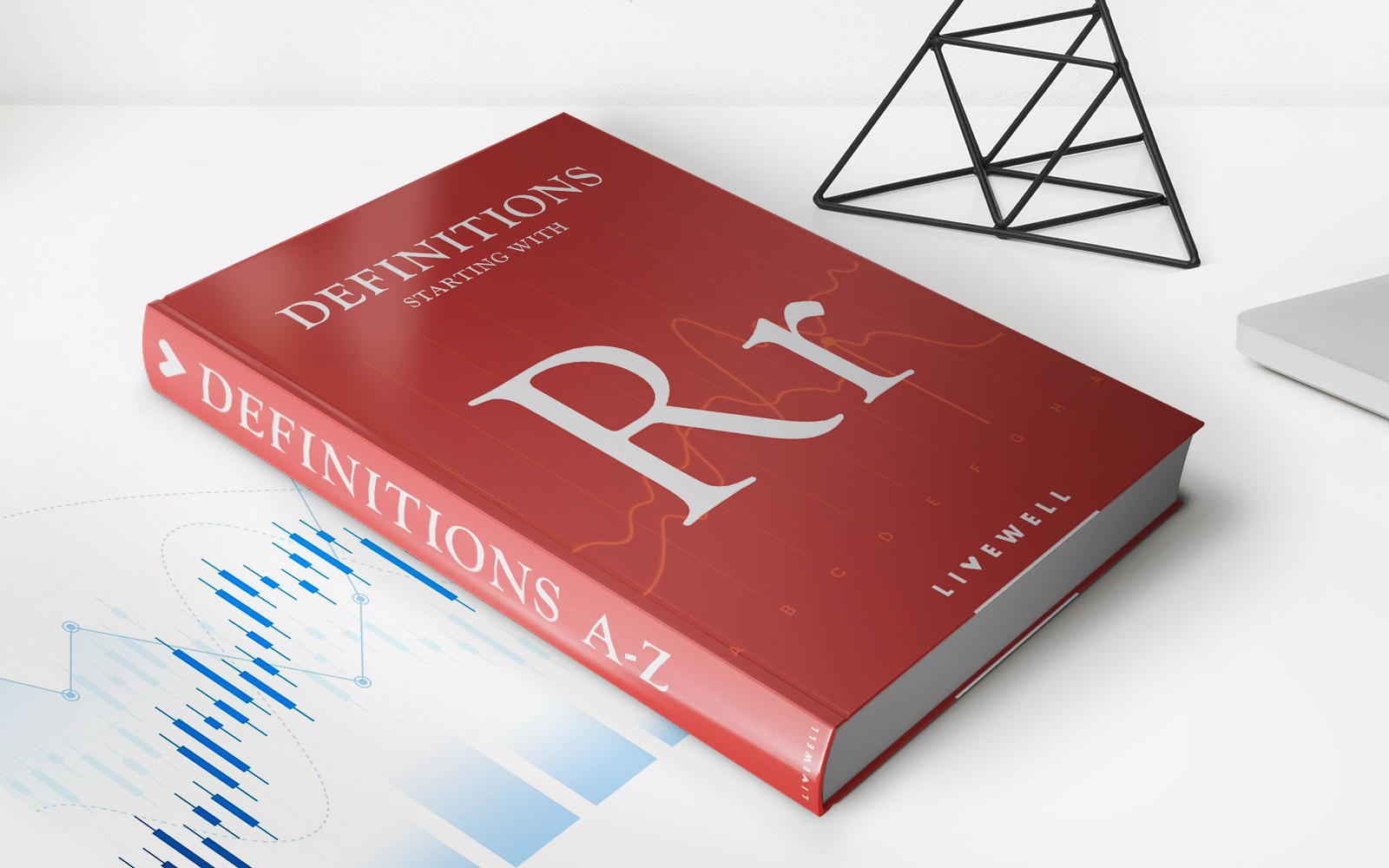Home>Finance>When Is Revenue Recognized In Accrual Accounting


Finance
When Is Revenue Recognized In Accrual Accounting
Published: October 8, 2023
Learn about revenue recognition in accrual accounting and its importance in finance. Discover when revenue is recognized and how it impacts financial statements.
(Many of the links in this article redirect to a specific reviewed product. Your purchase of these products through affiliate links helps to generate commission for LiveWell, at no extra cost. Learn more)
Table of Contents
- Introduction
- Definition of Revenue Recognition
- Principles of Accrual Accounting
- Criteria for Revenue Recognition
- Timing of Revenue Recognition
- Recognition of Revenue from Sales of Goods
- Recognition of Revenue from Services Rendered
- Recognition of Revenue from Long-Term Contracts
- Recognition of Revenue from Interest and Dividends
- Recognition of Revenue from Licensing and Royalties
- Conclusion
Introduction
Revenue recognition is a fundamental concept in accounting that determines when and how companies should recognize revenue in their financial statements. Accrual accounting, which is the most widely used accounting method, follows specific principles and criteria for revenue recognition. Understanding these principles is essential for investors, analysts, and stakeholders to accurately assess a company’s financial performance.
In accrual accounting, revenue is recognized when it is earned, regardless of when the payment is received. This method provides a more accurate representation of a company’s financial health by matching revenue with the period in which it was generated. It also ensures that expenses and liabilities incurred in the process of generating revenue are properly accounted for. By adhering to the principles of accrual accounting, companies can present a comprehensive and transparent view of their financial statements.
Accurate revenue recognition is crucial for several reasons. It allows stakeholders to evaluate a company’s financial performance, make informed investment decisions, and assess its ability to generate future cash flows. It also enables companies to comply with accounting standards, such as the Generally Accepted Accounting Principles (GAAP) in the United States and the International Financial Reporting Standards (IFRS) globally.
In this article, we will explore the principles and criteria for revenue recognition in accrual accounting. We will outline when revenue is recognized for various types of transactions, including the sales of goods, rendering services, long-term contracts, interest and dividends, and licensing and royalties. By examining these scenarios, we will gain a comprehensive understanding of the timing and factors involved in revenue recognition.
Definition of Revenue Recognition
Revenue recognition is the accounting principle that determines when and how revenue is recorded by a company in its financial statements. It is the process of formally acknowledging and reporting revenue earned from the sale of goods, rendering of services, or other sources.
According to the International Accounting Standards Board (IASB), revenue is defined as the inflow of economic benefits arising from the usual activities of an entity, resulting in an increase in equity, other than contributions from equity participants. In simpler terms, it refers to the income generated by a company through their core business operations.
Accurate revenue recognition is essential for financial reporting because it provides a true and fair representation of a company’s financial performance. It ensures that revenue is reported in the appropriate accounting period, matching it with the expenses and activities associated with its generation. This enhances the comparability and transparency of financial statements, allowing stakeholders to make informed decisions.
In accrual accounting, revenue is recognized when it is earned, irrespective of when the payment is received. This differs from cash basis accounting, where revenue is recorded only when the cash is received. The purpose of using the accrual method is to provide a more accurate reflection of a company’s financial position by recognizing revenue in the period in which it is earned.
Revenue recognition involves the application of specific principles and criteria outlined by accounting standards, such as GAAP or IFRS. These principles dictate when revenue should be recognized, how to measure its monetary value, and what disclosures should be made in the financial statements.
Furthermore, revenue recognition extends beyond just recognizing sales revenue. It also includes revenue from other sources, such as interest income, dividends, licensing fees, and royalties. Each type of revenue may have unique recognition criteria and measurement techniques, which we will explore in later sections of this article.
In summary, revenue recognition is a vital aspect of accounting that ensures revenue is accurately recorded, matching it with the appropriate accounting period. It provides valuable information to stakeholders and facilitates the assessment of a company’s financial performance and profitability.
Principles of Accrual Accounting
Accrual accounting is built upon several fundamental principles that guide the recognition of revenue. These principles ensure that revenue is recorded in the appropriate accounting period, providing a more accurate picture of a company’s financial position. The key principles of accrual accounting include:
- Revenue recognition principle: This principle states that revenue should be recognized when it is earned, regardless of when the payment is received. It ensures that revenue is recorded in the period in which the goods or services are provided, reflecting the true economic value generated by the company.
- Matching principle: The matching principle aligns expenses with the revenue they help generate. It states that expenses should be recognized in the same period as the revenue to which they relate. By matching expenses and revenue, accrual accounting provides a more accurate representation of a company’s profitability.
- Consistency principle: The consistency principle requires companies to use consistent accounting methods and practices over time. This ensures comparability between financial statements of different periods, allowing stakeholders to analyze performance and make informed decisions.
- Materiality principle: The materiality principle states that financial information should only be disclosed if its omission or misstatement would impact the decision-making process of users. This principle allows companies to focus on significant information and avoid inundating users with immaterial details.
- Full disclosure principle: The full disclosure principle requires companies to disclose all relevant and material information in their financial statements and accompanying notes. This principle promotes transparency and provides users with a comprehensive understanding of a company’s financial position and performance.
By adhering to these principles, accrual accounting ensures that revenue is accurately recorded and reported. It provides a more comprehensive and transparent view of a company’s financial health by matching revenue with the period in which it is earned and aligning expenses with the revenue they help generate. These principles not only enhance the quality and credibility of financial statements but also facilitate meaningful analysis and decision-making for stakeholders.
Criteria for Revenue Recognition
The recognition of revenue in accrual accounting is based on specific criteria that must be met before revenue can be recorded in the financial statements. These criteria ensure that revenue is recognized when it is earned and can be reliably measured. The key criteria for revenue recognition include:
- Earnings process completion: Revenue can be recognized when the earnings process, such as the delivery of goods or completion of services, is substantially complete. This usually occurs when the risks and rewards associated with the goods or services have been transferred to the customer.
- Collectibility: Revenue should only be recognized if it is reasonably assured that payment will be received. This involves assessing the creditworthiness of the customer and the likelihood of payment. If collectibility is not reasonably assured, then revenue is not recognized until it can be reliably estimated.
- Measurable: Revenue must be measurable in monetary terms with reasonable accuracy. This means that the amount of revenue can be determined and reliably quantified.
- Relevance and reliability: Revenue should be relevant and reliable for decision-making. It should provide useful information to users and be based on verifiable evidence.
These criteria ensure that revenue is recognized in a consistent and reliable manner across different industries and business transactions. They prevent the premature recognition of revenue before it is earned or when payment is uncertain. By applying these criteria, companies can provide a true and fair representation of their financial performance.
It’s important to note that the specific criteria for revenue recognition may vary depending on the nature of the transaction. Different industries and types of revenue may have additional factors to consider before recognition. For example, long-term contracts may have specific criteria related to percentage of completion or milestones. Licensing and royalties may require assessment of intellectual property rights and contractual terms.
By following the criteria for revenue recognition, companies can ensure the accuracy and reliability of their financial statements. This not only provides transparency for stakeholders but also allows for meaningful analysis and decision-making based on the recognized revenue.
Timing of Revenue Recognition
The timing of revenue recognition in accrual accounting is based on the principles of when and how revenue is earned. While revenue is recognized when it is earned, the specific timing can vary depending on the type of transaction. Let’s explore the timing of revenue recognition for different scenarios:
- Recognition of Revenue from Sales of Goods: Revenue from the sale of goods is typically recognized when the risks and rewards of ownership have transferred to the buyer. This occurs when the seller has delivered the goods, the buyer has accepted them, and the seller no longer has significant control or involvement over the goods.
- Recognition of Revenue from Services Rendered: Revenue from services rendered is recognized as the services are performed or when the service period is complete. This typically involves milestones, completion of tasks, or the passage of time, depending on the nature of the service.
- Recognition of Revenue from Long-Term Contracts: Revenue from long-term contracts, such as construction projects, is recognized based on the percentage of completion method. This method recognizes revenue in proportion to the extent of work completed relative to the total contract. Milestones or costs incurred may be used as indicators of progress.
- Recognition of Revenue from Interest and Dividends: Revenue from interest and dividends is recognized over time as they are earned. For example, interest income from loans is recognized based on the passage of time and the contractual interest rate. Dividends are recognized when the shareholder’s entitlement to receive payment is established.
- Recognition of Revenue from Licensing and Royalties: Revenue from licensing and royalties is recognized over the period in which the licensed rights are granted or as the underlying sales occur. This depends on the terms of the licensing agreement and the contractual arrangements.
It’s important to note that revenue recognition should also account for any uncertainties or contingent factors that may affect the timing or amount of revenue. For example, if there are uncertain collectability issues, revenue may be recognized when it is reliably estimable, rather than waiting for actual payment.
By understanding the timing of revenue recognition for different types of transactions, companies can accurately report their financial performance. This ensures that revenue is recognized in the appropriate accounting period, providing stakeholders with valuable information for decision-making.
Recognition of Revenue from Sales of Goods
The recognition of revenue from the sales of goods is a crucial aspect of accrual accounting. Revenue is recognized when the risks and rewards of ownership have transferred to the buyer, indicating that the seller has fulfilled its obligations. The specific criteria for revenue recognition from sales of goods include:
- Delivery of goods: Revenue from the sales of goods is typically recognized when the seller has delivered the goods to the buyer. Delivery can occur physically, electronically, or by other means specified in the sales agreement.
- Acceptance by the buyer: Revenue recognition also depends on the buyer accepting the goods. Acceptance signifies the buyer’s satisfaction with the goods received and their intention to retain and use them for their intended purpose.
- Transfer of ownership: Revenue is recognized when the risks and rewards of ownership have transferred from the seller to the buyer. This can be determined by contractual terms, legal transfer of title, or specific events agreed upon in the sales agreement.
- Collectibility: Revenue should only be recognized if it is reasonably assured that payment will be received. If collectability is not reasonably assured, revenue is not recognized until payment becomes reliably estimable.
It’s important to consider the specific terms and conditions of each sales agreement to determine when revenue should be recognized. For example, if the agreement includes a provision for returns or warranties, revenue recognition may be deferred until the return period has expired or the warranty obligations have been fulfilled.
Furthermore, revenue may be recognized at a point in time or over time, depending on the nature of the transaction. For instance, revenue from the sale of goods that are custom-made or require significant modifications may be recognized over time as the work progresses, using a percentage of completion method.
Accurate recognition of revenue from the sales of goods is essential for providing stakeholders with a clear understanding of a company’s financial performance. It ensures that revenue is reported in the appropriate accounting period and reflects the transfer of ownership and fulfillment of obligations between the seller and the buyer.
By applying the criteria for recognizing revenue from the sales of goods, companies can present a true and fair view of their financial statements, enabling stakeholders to make informed decisions based on reliable information.
Recognition of Revenue from Services Rendered
The recognition of revenue from services rendered is an important aspect of accrual accounting. Revenue is recognized as the services are performed or when the service period is complete. The specific criteria for revenue recognition from services rendered include:
- Performance of services: Revenue from services rendered is recognized when the services have been performed. This can be determined by milestones, completion of tasks, or the passage of time, depending on the nature of the service.
- Measurement of progress: In some cases, the recognition of revenue from services may depend on the extent of completion or the achievement of specific milestones. This allows for revenue recognition to occur proportionally as the services are delivered or the milestones are met.
- Customer acceptance: Depending on the terms of the agreement, revenue recognition may be contingent upon customer acceptance of the services provided. Acceptance serves as an indication that the customer is satisfied with the services and intends to utilize them for their intended purpose.
- Collectibility: Revenue should only be recognized if it is reasonably assured that payment will be received. If collectability is not reasonably assured, revenue is not recognized until payment becomes reliably estimable.
It’s important to consider the specific terms of the service agreement to determine when revenue should be recognized. Some service agreements may contain milestones or deliverables that trigger revenue recognition upon completion, while others may recognize revenue evenly over the service period based on the passage of time.
Additionally, if a service contract includes variable consideration or contingency arrangements, revenue recognition may be adjusted to reflect the uncertainty. This ensures that revenue is recognized appropriately, taking into account any potential changes in the amount or timing of payment.
Accurate recognition of revenue from services rendered is crucial for providing stakeholders with a comprehensive view of a company’s financial performance. It ensures that revenue is reported in the appropriate accounting period and closely aligns with the delivery or completion of services.
By applying the criteria for recognizing revenue from services rendered, companies can present a true and fair view of their financial statements, allowing stakeholders to assess the value and quality of the services provided and make informed decisions based on reliable information.
Recognition of Revenue from Long-Term Contracts
The recognition of revenue from long-term contracts is a unique aspect of accrual accounting, as these contracts often span multiple accounting periods. Revenue from long-term contracts is recognized based on the percentage of completion method, which measures the progress of the contract to determine the appropriate revenue recognition. The specific criteria for revenue recognition from long-term contracts include:
- Percentage of completion: Revenue from long-term contracts is recognized proportionally as the contract progresses. This is determined by comparing the costs incurred to complete the contract with the total estimated costs. The ratio of costs incurred to total estimated costs represents the percentage of completion.
- Milestone approach: In some cases, revenue recognition may be tied to the completion of specific milestones within the long-term contract. When significant milestones are reached, revenue may be recognized accordingly, reflecting the achievement of these milestones.
- Measurability of the contract: For revenue to be recognized from a long-term contract, the contract must have a clear and measurable scope, deliverables, and costs. This ensures that the progress of the contract can be reliably measured and revenue can be recognized accordingly.
- Collectibility: Revenue should only be recognized if it is reasonably assured that payment will be received. If collectability is not reasonably assured, revenue is not recognized until payment becomes reliably estimable.
It’s worth noting that additional criteria and methods may be applied depending on the specific complexities and circumstances of the long-term contract. For example, certain contracts may require the use of specific accounting standards or industry-specific guidelines.
Accurate recognition of revenue from long-term contracts is vital for providing stakeholders with a comprehensive view of a company’s financial performance. The percentage of completion method ensures that revenue is recognized based on the progress of the contract, reflecting the work and costs incurred over time.
By applying the criteria for recognizing revenue from long-term contracts, companies can present a true and fair view of their financial statements, allowing stakeholders to assess the value and profitability of these contracts and make informed decisions based on reliable information.
Recognition of Revenue from Interest and Dividends
The recognition of revenue from interest and dividends is an important component of accrual accounting. Revenue from interest and dividends is recognized over time as they are earned. The specific criteria for revenue recognition from interest and dividends include:
- Accrual basis: Revenue from interest and dividends is recognized on an accrual basis, meaning it is recognized as it is earned, rather than when the payment is received. This ensures that revenue is recognized in the appropriate accounting period.
- Time factors: Revenue from interest is typically recognized based on the passage of time using the effective interest rate method. This method calculates the interest income over the life of the instrument by applying a predetermined interest rate to the principal amount.
- Contractual terms: The specific contractual terms of interest-bearing instruments, such as loans, bonds, or savings accounts, dictate the timing and amount of interest revenue recognition. These terms may include frequency of interest payments, compounding, or other factors that impact the calculation of interest income.
- Dividend declaration: Revenue from dividends is recognized when the dividend is declared by the company’s board of directors. The declaration establishes the legal obligation to pay dividends, and the revenue is recognized at that point.
- Collectibility: Revenue from interest and dividends should only be recognized if it is reasonably assured that payment will be received. If collectability is not reasonably assured, revenue is not recognized until payment becomes reliably estimable.
It’s worth noting that the recognition of revenue from interest and dividends may also be subject to specific regulations or accounting standards depending on the jurisdiction or industry in which the company operates.
Accurate recognition of revenue from interest and dividends is crucial for providing stakeholders with a comprehensive view of a company’s financial performance. It ensures that revenue is reported in the appropriate accounting period, reflecting the earnings generated from interest-bearing instruments or investments.
By applying the criteria for recognizing revenue from interest and dividends, companies can present a true and fair view of their financial statements, allowing stakeholders to assess the income generated from these sources and make informed decisions based on reliable information.
Recognition of Revenue from Licensing and Royalties
The recognition of revenue from licensing and royalties is a unique aspect of accrual accounting. Revenue from licensing and royalties is recognized over the period in which the licensed rights are granted, or as the underlying sales occur. The specific criteria for revenue recognition from licensing and royalties include:
- Granting of rights: Revenue is recognized when the rights to use intellectual property or other assets are granted to the licensee. This typically involves the signing of a licensing agreement, which establishes the terms and conditions of the license.
- Periodic payments: Revenue recognition may be based on the receipt of periodic payments from the licensee, such as licensing fees. These payments are recognized as revenue over the time period specified in the agreement.
- Sales-based royalties: Revenue recognition may also be tied to the sales or usage of the licensed assets. Royalties are recognized as revenue when the underlying sales occur or when the specific usage thresholds defined in the agreement are met.
- License duration: The recognition of revenue may be spread over the duration of the license agreement. Revenue from licensing and royalties is recognized over the period in which the licensed rights are granted and utilized.
- Collectibility: Revenue from licensing and royalties should only be recognized if it is reasonably assured that payment will be received. If collectability is not reasonably assured, revenue is not recognized until payment becomes reliably estimable.
It’s important to consider the specific terms and conditions of each licensing or royalty agreement to determine when revenue should be recognized. For example, the terms may vary depending on the type of intellectual property, scope of the license, or contractual obligations of the licensee.
Additionally, revenue recognition from licensing and royalties may involve estimating future sales or usage based on historical data or market trends. These estimates should be made in a reasonable and supportable manner to ensure accurate revenue recognition.
Accurate recognition of revenue from licensing and royalties is crucial for providing stakeholders with a comprehensive view of a company’s financial performance. It ensures that revenue is reported in the appropriate accounting period, reflecting the value and economic benefits derived from the licensed assets.
By applying the criteria for recognizing revenue from licensing and royalties, companies can present a true and fair view of their financial statements, allowing stakeholders to assess the value and profitability of licensing arrangements and make informed decisions based on reliable information.
Conclusion
Accurate revenue recognition is a critical aspect of accrual accounting, ensuring that revenue is recorded in the appropriate accounting period and aligning it with the economic value generated by the company. The principles and criteria for revenue recognition provide a consistent framework for companies to report their financial performance and enable stakeholders to make informed decisions based on reliable information.
Throughout this article, we have explored the definition of revenue recognition and the principles of accrual accounting that guide its implementation. We have discussed the criteria for recognizing revenue from various types of transactions, including sales of goods, services rendered, long-term contracts, interest and dividends, and licensing and royalties. Each type of transaction has its own specific factors and considerations for revenue recognition, ensuring that revenue is accurately reported.
By following the principles of accrual accounting and adhering to the specific criteria for revenue recognition, companies can enhance the transparency and comparability of their financial statements. Accurate revenue recognition provides stakeholders with valuable insights into a company’s financial performance, allowing them to assess its profitability, financial health, and future prospects.
It’s important for companies to stay updated with the latest accounting standards, such as GAAP and IFRS, to ensure compliance and consistency in revenue recognition practices. Revenue recognition is a dynamic area of accounting, and changes in regulations and industry practices may impact the timing and methods of recognizing revenue for different types of transactions.
In conclusion, revenue recognition plays a vital role in providing a true and fair view of a company’s financial performance. Understanding the principles and criteria for revenue recognition is essential for investors, analysts, and stakeholders to make informed decisions and accurately assess the financial health and profitability of a company.














